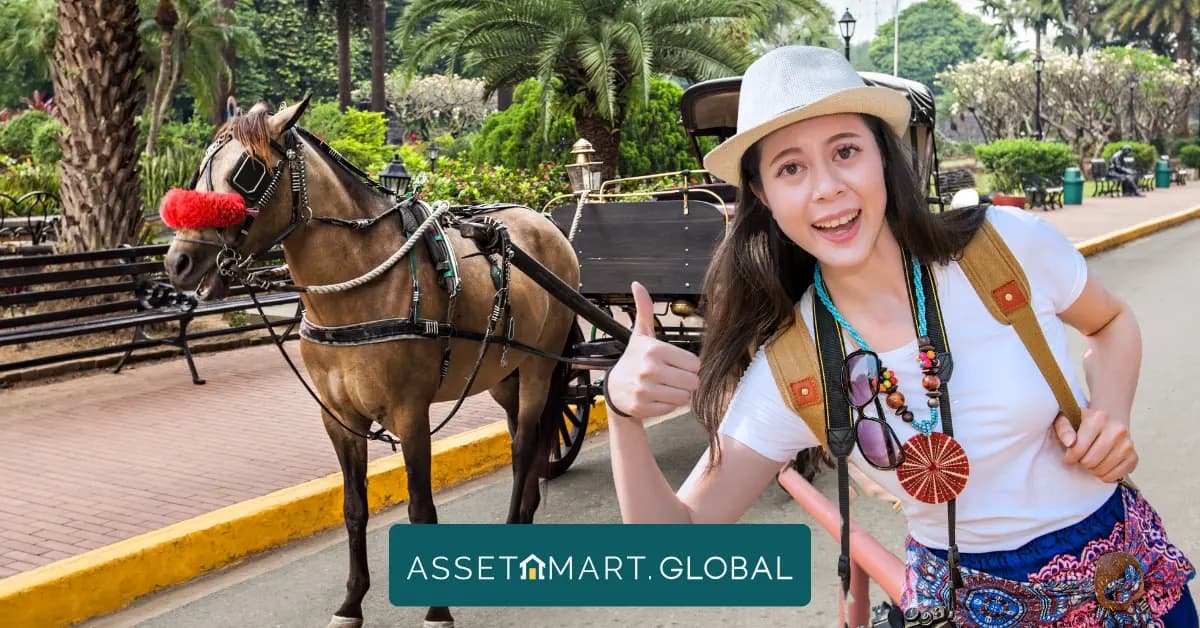
Must see tourist landmarks in Metro Manila
Updated on December 31 2025
Tourism plays an integral role in the vibrant economy and culture of the Philippines, with Metro Manila serving as the primary gateway to the country's many diverse islands. As the nation's capital region, it's home to a mix of historical and modern attractions that offer a glimpse into the country's rich history, diverse culture, and rapid development. In this article, we'll delve into the top five tourist landmarks in Metro Manila, unpacking their history and some fascinating facts about each of them.
1. Intramuros

Intramuros, colloquially known as the 'Walled City,' is arguably the most historically significant landmark in Metro Manila. Established in 1571, it served as the seat of government during the Spanish colonial period. It spans a massive 64 hectares, encapsulating the old city of Manila within its fortified walls.
The name 'Intramuros' originates from the Latin phrase, 'within the walls,' accurately describing the nature of this enclave. It houses some of the oldest and most historically significant structures in the Philippines, including Fort Santiago, Manila Cathedral, and San Agustin Church.
Fort Santiago, once a citadel for Spanish conquistadors, is now a well-preserved remnant of the country's colonial past. The Manila Cathedral, rebuilt eight times due to various calamities, remains a symbol of the city's resilience. The San Agustin Church, a UNESCO World Heritage Site, is the oldest stone church in the country, showcasing intricate Baroque architecture.
Walking through the cobbled streets of Intramuros, one can't help but feel transported back in time, with beautifully restored Spanish-era houses, horse-drawn carriages, and remnants of the old city walls serving as a poignant reminder of Manila's storied past.
2. Rizal Park (Luneta Park)

Rizal Park, locally known as Luneta, is a historical urban park located along Roxas Boulevard. It's one of Asia's largest urban parks, spanning over 58 hectares. The park is named after the country's national hero, Dr. Jose Rizal, whose monument stands as the park's most iconic landmark.
Rizal Park played a significant role in Philippine history, being the site where Rizal was executed in 1896. This event sparked the Philippine Revolution against Spanish rule, ultimately leading to the country's independence.
Apart from its historical significance, the park is also a hub for recreational activities, with beautifully landscaped gardens, open-air concerts, a planetarium, and the National Museum of Natural History. It's a favorite spot for family outings, picnics, and even early morning or late afternoon jogs.
3. Cultural Center of the Philippines (CCP) Complex

The CCP Complex is the center of art and culture in the Philippines. Established in 1969, it was part of former First Lady Imelda Marcos's dream to create a 'City of Man,' aimed at promoting and preserving Filipino arts and culture.
Encompassing an area of 62 hectares, the complex houses multiple performance venues, including the Tanghalang Pambansa (National Theater), which is known for its architectural grandeur. The CCP has been the venue of numerous local and international productions and events, including the annual Cinemalaya Philippine Independent Film Festival and the Pasinaya Open House Festival, the largest multi-arts festival in the Philippines.
In addition, the complex also hosts the Folk Arts Theater, the Philippine International Convention Center (PICC), and the Manila Film Center, infamous for its haunted reputation due to a tragic accident during its construction in the 1980s.
4. Makati Central Business District

While historical sites provide a glimpse into the country's past, the Makati Central Business District (CBD) stands as a testament to the Philippines'
progress and modernization. As the country's premier financial and business hub, it's home to multinational corporations, embassies, luxury apartments, and high-end shopping malls like Greenbelt and Glorietta.
Makati CBD is also a cultural destination with Ayala Museum, one of the country's most distinguished museums, at its heart. The museum offers extensive collections of pre-colonial artifacts, indigenous textiles, and contemporary art.
Despite its urban jungle appearance, Makati CBD also offers green spaces like Ayala Triangle Gardens, a lush oasis known for its jogging paths, outdoor dining options, and the annual Festival of Lights display during the Christmas season.
5. Bonifacio Global City (BGC)

The last on the list, but certainly not the least, is the Bonifacio Global City (BGC). Known as the 'Home of Passionate Minds,' BGC is a thriving lifestyle district in Taguig City. It's a testament to the country's rapid urban development, offering a blend of residential, commercial, and corporate spaces.
What sets BGC apart is its commitment to art and culture, evident in its numerous public art installations and vibrant street murals. The Mind Museum, the country's first world-class science museum, is also located here, offering an interactive learning experience for both kids and adults.
Moreover, BGC is home to several shopping and dining establishments, offering a vast array of culinary experiences, ranging from local Filipino cuisine to international gastronomic delights. The cityscape, with its well-planned streets and modern architecture, provides a beautiful backdrop for leisurely strolls, fitness activities, and urban exploration.
Metro Manila is more than just the Philippines' capital region; it's a living testament to the country's rich history, diverse culture, and potential for progress. Whether you're a history buff, art aficionado, foodie, or urban explorer, Metro Manila has something to offer you. These five landmarks only scratch the surface of what Metro Manila has to offer, and the best way to experience it is to immerse oneself in the vibrant sights, sounds, and tastes of this dynamic region.